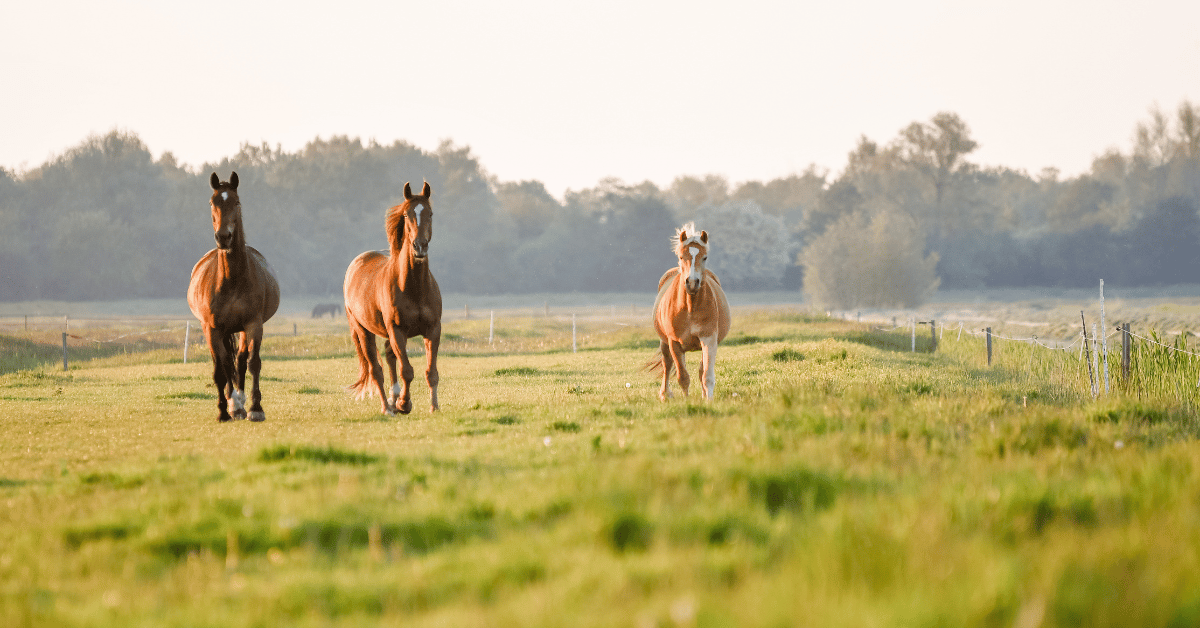The Impact of Training Techniques on the Mental Health of Horses
When working with a horse, you can apply different training methods. A basic understanding of how horses learn and how training affects their physical and mental well-being is essential. Without this knowledge, unexpected and unintended effects can occur, which are unpleasant for both horse and rider.
Others
Welfare

20 November '25 • 3 min reading time
In recent years, scientific research has increasingly shown that the way we train horses affects their welfare—not only physically. Training that does not match the horse’s nature or learning style can cause stress and confusion, leading to unwanted behaviors such as spooking or ignoring aids.
Bucking and Refusing
Bucking, rearing, refusing, and other problem behaviors are usually reactions to a welfare issue. This could involve pain, ill-fitting tack, lack of free movement, insufficient social contact, or stomach ulcers. Training and communication methods can also cause problems. If a horse does not understand the rider, receives conflicting signals, or must move in a biomechanically awkward way, unwanted behavior can emerge.
Welfare Problems
Studies show that misunderstood or undesired behavior is one of the main welfare issues in horses. People often interpret exaggerated reactions as naughtiness or lack of respect, which can lead to harsher training. Horses with better welfare show fewer undesirable behaviors, reducing the risk of accidents and injuries.
Conflicting Signals
Even well-meaning owners can unintentionally give conflicting signals. One common error is simultaneously giving forward and restraining aids. Poor timing or holding an aid too long creates stress and confusion. Negative reinforcement, when applied incorrectly, can confuse horses. For example, if pressure from a leg aid is not released immediately after the horse responds, the horse does not understand it has done the right thing. Confusion increases if punishment is added. A stressed, fearful horse is both dangerous and unable to learn.
Learning Theory
Training must be done step by step. Complex behaviors, such as jumping or lateral movements, require breaking the task into smaller elements before combining them. Stronger aids may be needed initially; as the horse is rewarded, aids can become subtler and less aversive.
Fear Responses
Negative experiences, such as injections, can make a horse anticipate unpleasant events and resist before they even happen.
Consistency
To achieve a correct response without causing stress or fear, aids and their release must always be consistent. Persistent pressure, poor timing, or inconsistent aids can cause the horse to shut down, slow its response, or behave undesirably.
Timing
Timing is critical. When giving a leg aid, the pressure must be released immediately when the horse responds. When asking the horse to stop, release rein pressure as soon as it slows down. Incorrect timing may cause the horse to interpret the aid as punishment, leading to confusion and unwanted behavior.
Forcing Posture
A common error is trying to force the horse “onto the bit” or into a specific posture prematurely. Classical dressage develops self-carriage and impulsion over time. Pressure to achieve quick results often leads to artificial postures using gadgets or fixed reins. These forced postures are biomechanically unsound and unhealthy, causing stress, learned helplessness, and ultimately reduced welfare, both mentally and physically.
Sources
Karen L. Luke, Tina McAdie, Bradley P. Smith, Amanda K. Warren-Smith. New insights into ridden horse behaviour, horse welfare and horse-related safety. Applied Animal Behaviour Science, Volume 246, 2022, 105539, ISSN 0168-1591, https://www.sciencedirect.com/science/article/pii/S0168159121003269
Andrew N. McLean, Janne Winther Christensen. The application of learning theory in horse training, Applied Animal Behaviour Science, Volume 190, 2017, Pages 18-27, ISSN 0168-1591, https://www.sciencedirect.com/science/article/pii/S0168159117300710
Andrew N. McLean, Paul D. McGreevy. Horse-training techniques that may defy the principles of learning theory and compromise welfare, Journal of Veterinary Behavior, Volume 5, Issue 4, 2010, Pages 187-195, ISSN 1558-7878, https://www.sciencedirect.com/science/article/pii/S1558787810000626
Mendonça, T.; Bienboire-Frosini, C.; Kowalczyk, I.; Leclercq, J.; Arroub, S.; Pageat, P. Equine Activities Influence Horses’ Responses to Different Stimuli: Could This Have an Impact on Equine Welfare? Animals 2019, 9, 290. https://doi.org/10.3390/ani9060290
Baragli, Paolo, Barbara Padalino, and Angelo Telatin. "The role of associative and non-associative learning in the training of horses and implications for the welfare (a review)." Annali dell'Istituto superiore di sanita 51 (2015): 40-51. https://www.scielosp.org/article/ssm/content/raw/?resource_ssm_path=/media/assets/aiss/v51n1/a08v51n1.pdf


